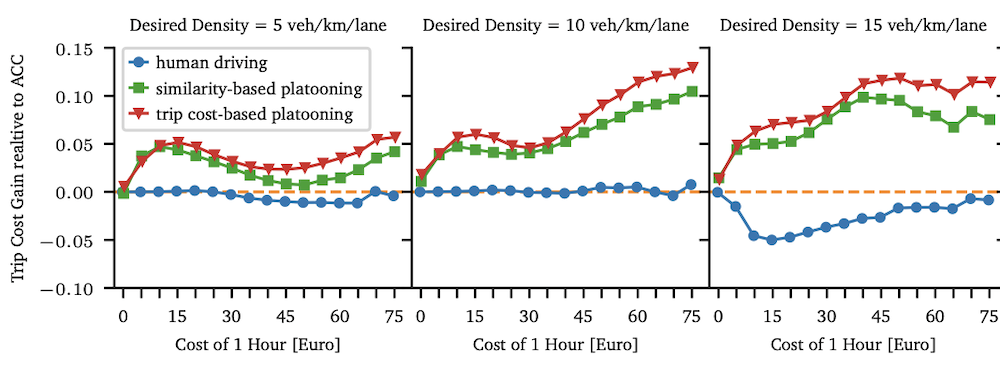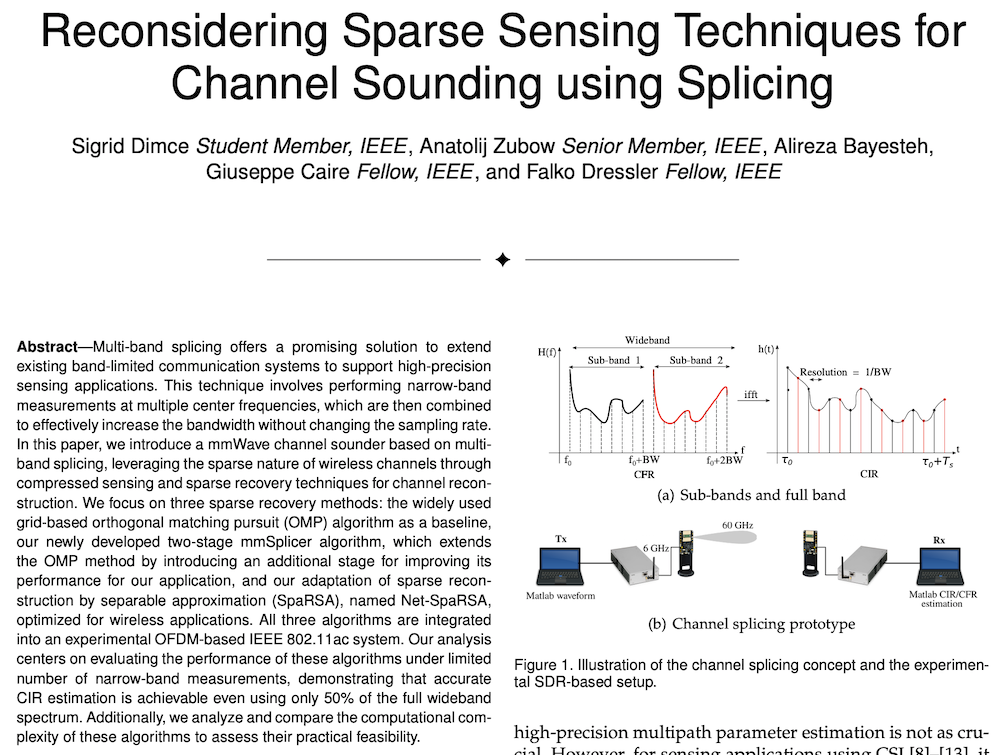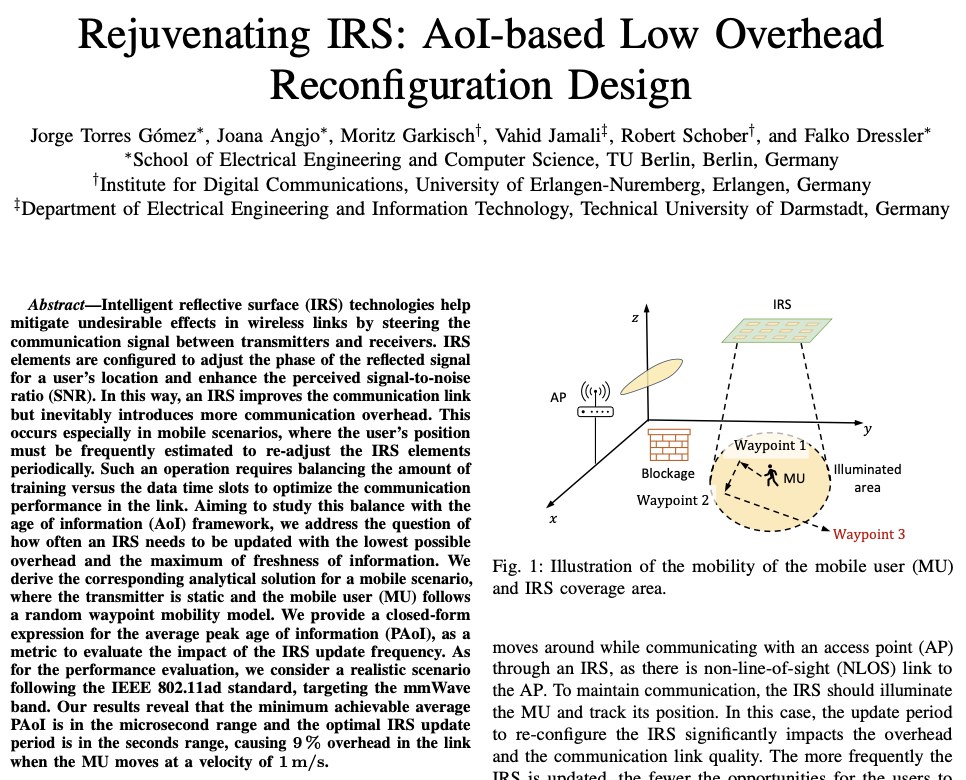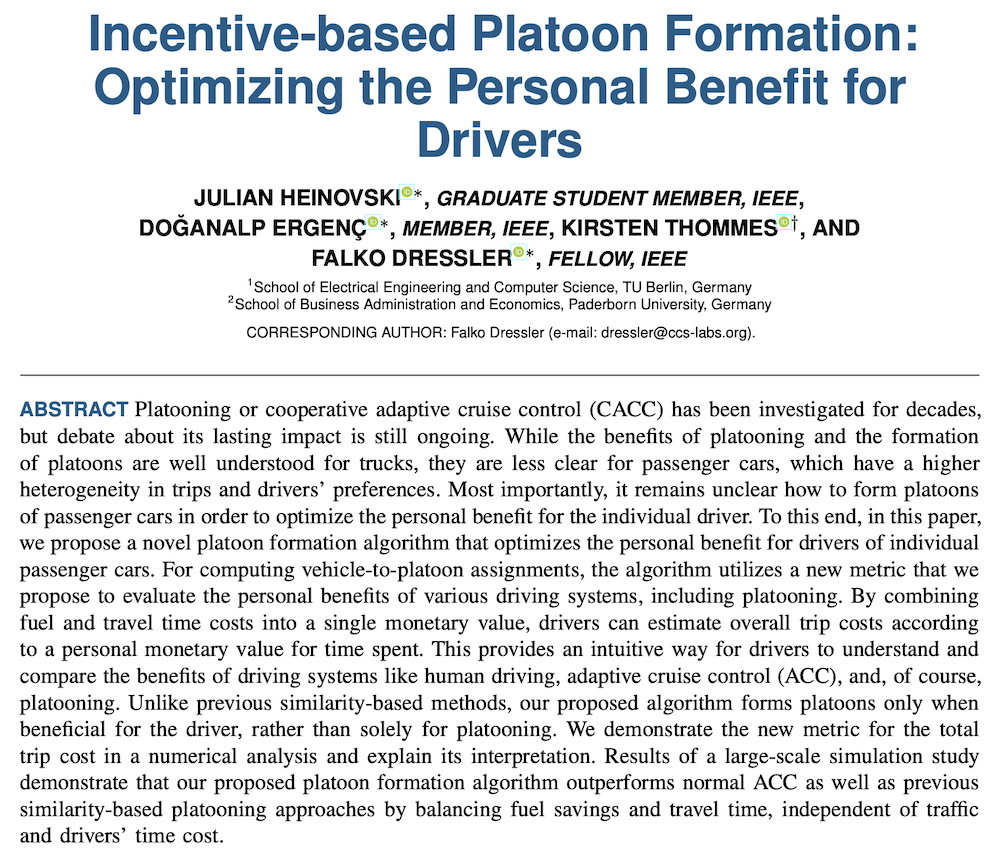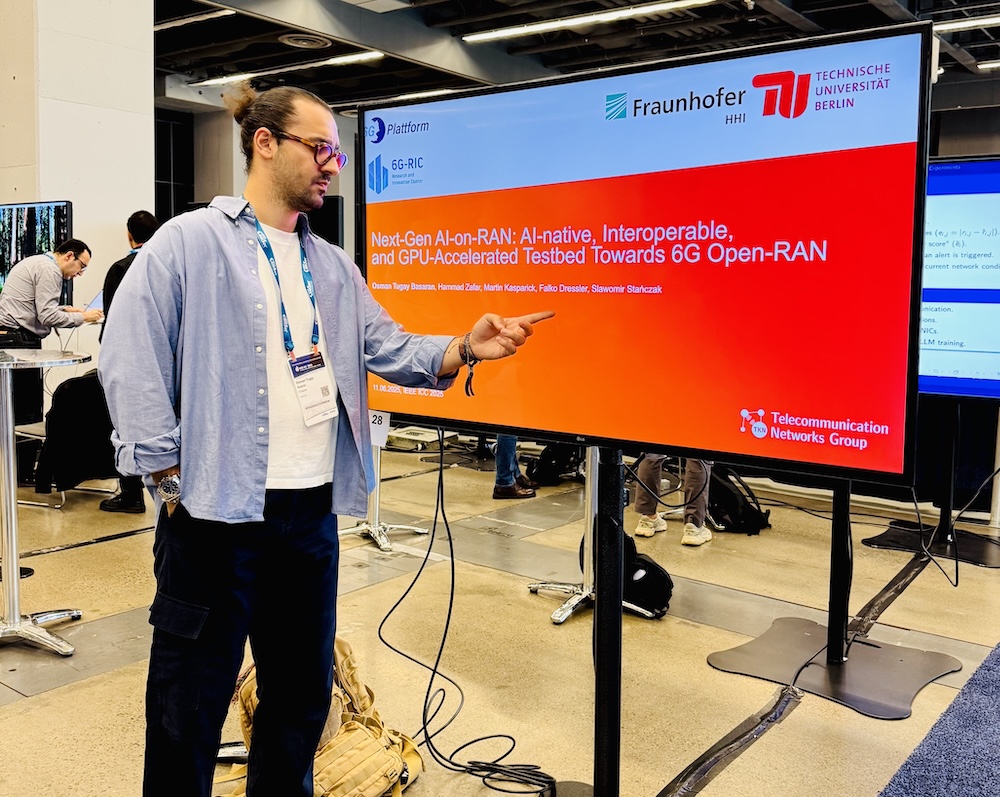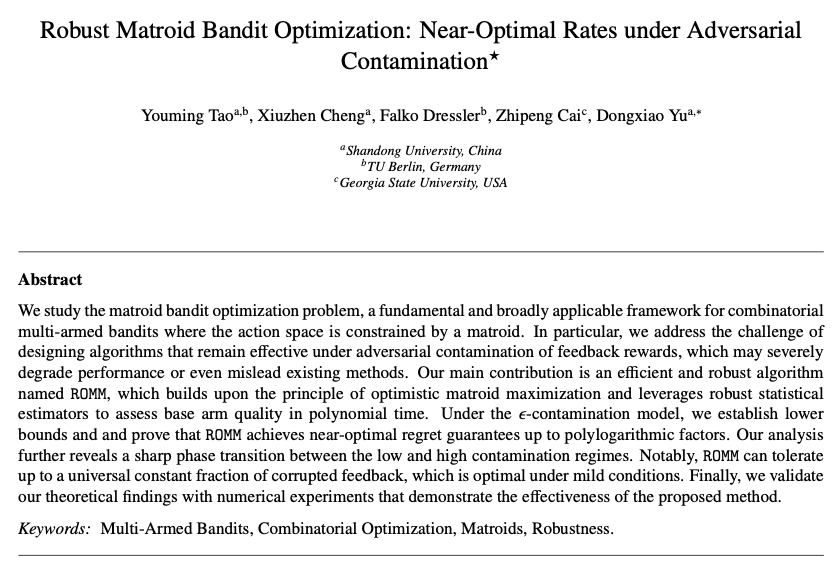Literature Database Entry
dimce2024mmsplicer
Sigrid Dimce, Anatolij Zubow and Falko Dressler, "mmSplicer: Toward Experimental Multiband Channel Splicing at mmWave Frequencies," Proceedings of 43rd IEEE International Conference on Computer Communications (INFOCOM 2024), Poster Session, Vancouver, Canada, May 2024.
Abstract
Joint communication and sensing (JCAS) and wireless sensing in general are gaining ever more attention in the research community. In general, wide-band sensing is required for high accuracy of the obtained distance measurements. However, wide-band sensing requires comparably expensive hardware (in terms of invest as well as energy consumption). As a solution, channel splicing has been developed for wide-band sensing using multiple narrow-band measurements. Despite many theoretical concepts, channel splicing at mmWave frequencies is still widely unexplored. In this paper, we present mmSplicer, which extends a splicing algorithm from the literature. We implemented mmSplicer in an SDR-based testbed for channel splicing at mmWave frequencies. First validation results show very high accuracy of the channel impulse response (CIR) in time domain.
Quick access
Original Version ![]() (at publishers web site)
(at publishers web site)
Authors' Version ![]() (PDF on this web site)
(PDF on this web site)
BibTeX ![]()
Contact
Sigrid Dimce
Anatolij Zubow
Falko Dressler
BibTeX reference
@inproceedings{dimce2024mmsplicer,
author = {Dimce, Sigrid and Zubow, Anatolij and Dressler, Falko},
doi = {10.1109/INFOCOMWKSHPS61880.2024.10620907},
title = {{mmSplicer: Toward Experimental Multiband Channel Splicing at mmWave Frequencies}},
publisher = {IEEE},
address = {Vancouver, Canada},
booktitle = {43rd IEEE International Conference on Computer Communications (INFOCOM 2024), Poster Session},
month = {5},
year = {2024},
}
Copyright notice
Links to final or draft versions of papers are presented here to ensure timely dissemination of scholarly and technical work. Copyright and all rights therein are retained by authors or by other copyright holders. All persons copying this information are expected to adhere to the terms and constraints invoked by each author's copyright. In most cases, these works may not be reposted or distributed for commercial purposes without the explicit permission of the copyright holder.
The following applies to all papers listed above that have IEEE copyrights: Personal use of this material is permitted. However, permission to reprint/republish this material for advertising or promotional purposes or for creating new collective works for resale or redistribution to servers or lists, or to reuse any copyrighted component of this work in other works must be obtained from the IEEE.
The following applies to all papers listed above that are in submission to IEEE conference/workshop proceedings or journals: This work has been submitted to the IEEE for possible publication. Copyright may be transferred without notice, after which this version may no longer be accessible.
The following applies to all papers listed above that have ACM copyrights: ACM COPYRIGHT NOTICE. Permission to make digital or hard copies of part or all of this work for personal or classroom use is granted without fee provided that copies are not made or distributed for profit or commercial advantage and that copies bear this notice and the full citation on the first page. Copyrights for components of this work owned by others than ACM must be honored. Abstracting with credit is permitted. To copy otherwise, to republish, to post on servers, or to redistribute to lists, requires prior specific permission and/or a fee. Request permissions from Publications Dept., ACM, Inc., fax +1 (212) 869-0481, or permissions@acm.org.
The following applies to all SpringerLink papers listed above that have Springer Science+Business Media copyrights: The original publication is available at www.springerlink.com.
This page was automatically generated using BibDB and bib2web.

